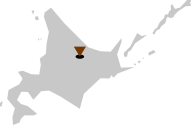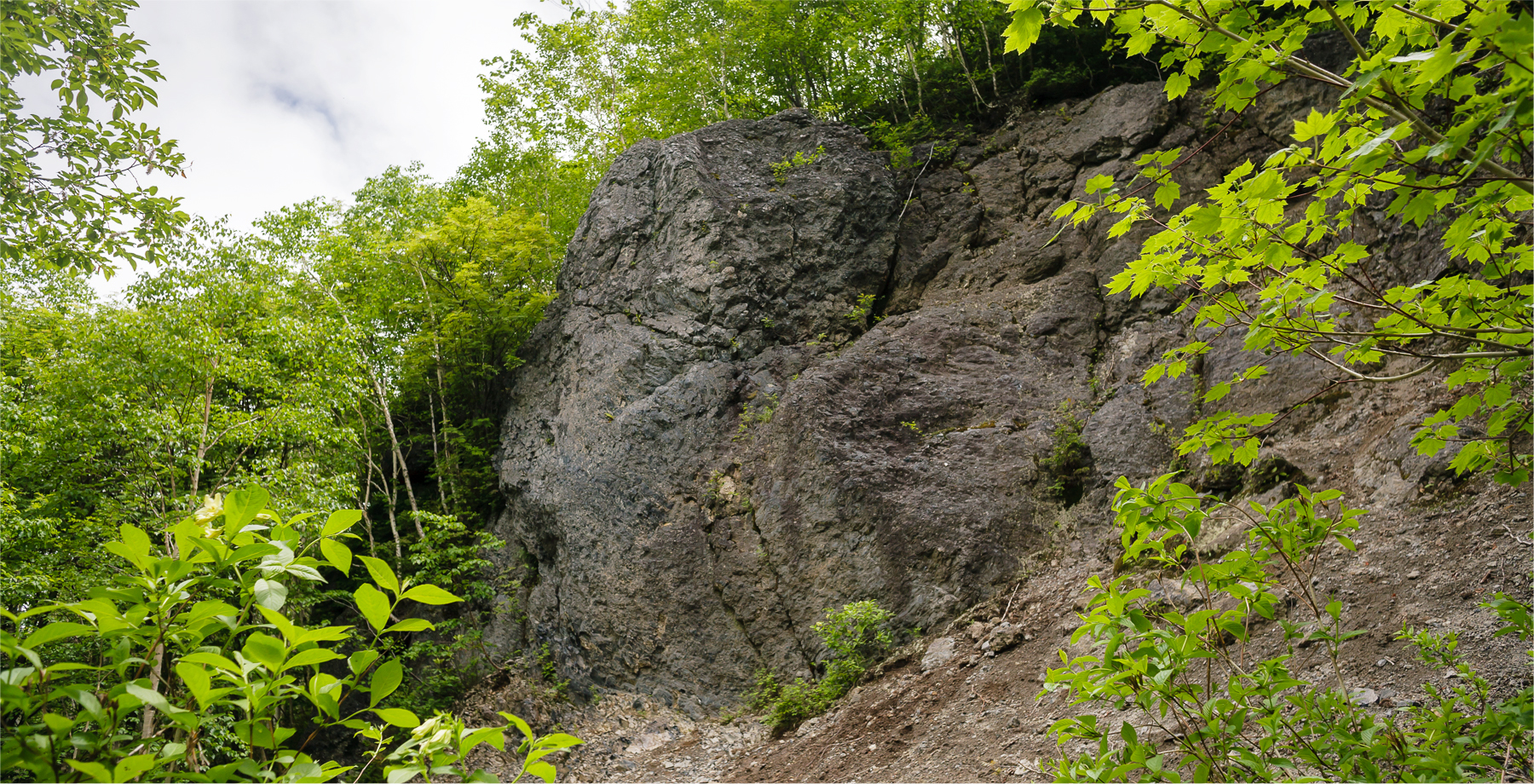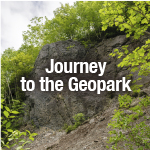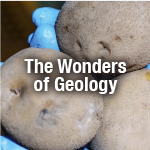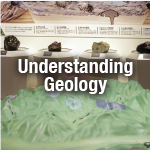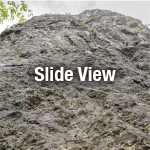Shirataki – the home of obsidian
Obsidian is the cooled and hardened part of the magma that forced its way to the surface of the earth during volcanic activity. These stones caught the eyes of the people of the Paleolithic era, approximately 30,000 years ago. Extremely hard with a glass-like quality, obsidian is easily processed, and as it was an ideal material for making stone tools, it made the lives of the people of the time much more convenient.
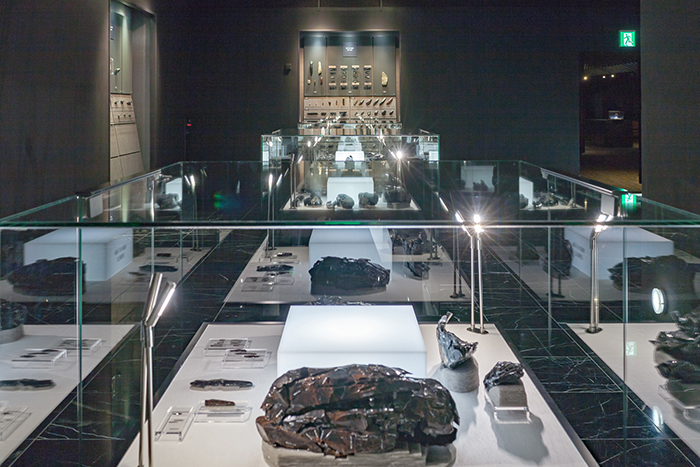
The Obsidian Gallery on the 2nd floor of the Shirataki Geopark Visitor Center.
Makoto Kumagai of the Shirataki Geopark told us about the characteristics of Shirataki’s stone tools.
Firstly, chunks of broken and chipped obsidian are left lying around. In other regions, these would be used to make smaller stone implements, making sure the stone was not wasted.
Also, there are few large stone tools. Completed items were taken to other places.
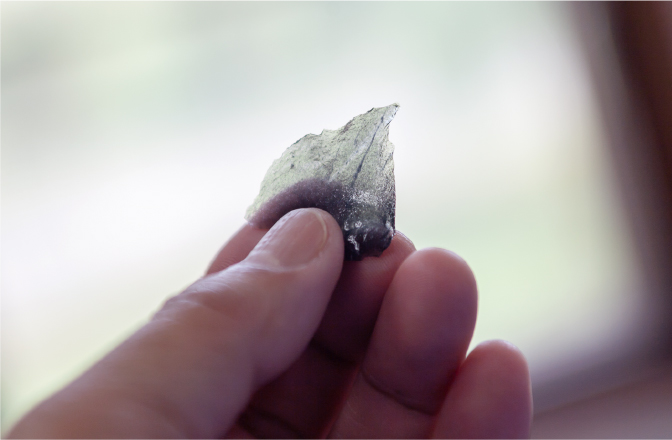
When obsidian is struck with force, it fractures. The thin fragments are transparent.
The reason why potatoes are delicious
Potatoes produced in Shirataki are delicious. Why? Because the fields comprise a thin layer of volcanic ash soil on top of a stone layer several meters thick. When the soil is excavated, many stones are revealed. The altitude is between 300 and 500 m. The snow melts late in spring, and winter arrives early.
Fields with good drainage are ideal for potato cultivation; if the soil contains many stones, the ventilation is good, and the stones retain the heat of the sun, helping the crops to grow. As the difference in daytime and nighttime temperatures is large, the potatoes’ starch levels are high.
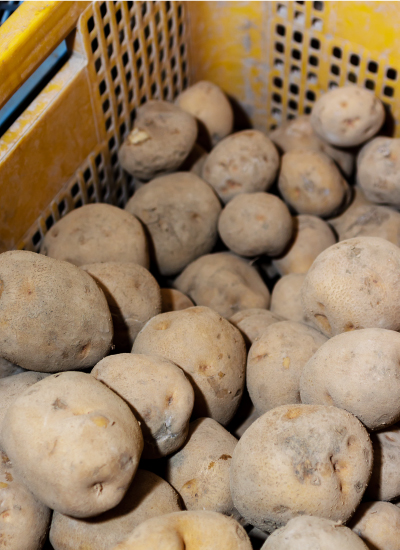
Shirataki potatoes are surprisingly sweet.
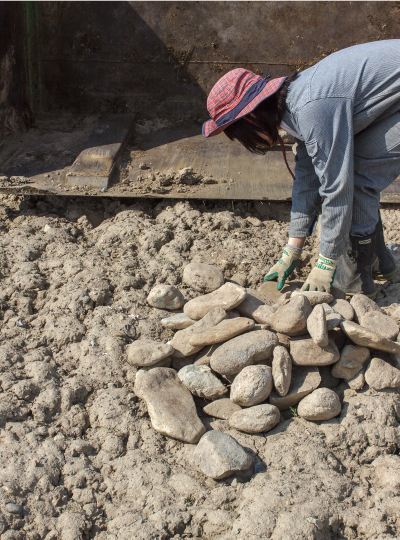
Spring farm work starts with picking up the stones.
An ice-age forest made by air holes
The Paleolithic era approximately 30,000 years ago was called “the final ice-age”. The natural environment of that time can be sensed among the band of “air holes” spread around the southern part of Maruseppu.
Rock hardened by the heat and weight of the pyroclastic flow from a volcanic eruption that occurred several million years ago, collapsed creating a slope on which the air holes formed. A wind of between two and five degrees blows through the caves throughout the year, creating an ideal habitat for vegetation. Sakhalin spruce – which grow in cold, barren areas – grow here, and alpine vegetation and mosses such as peat moss can be found at heights of around 400 m.
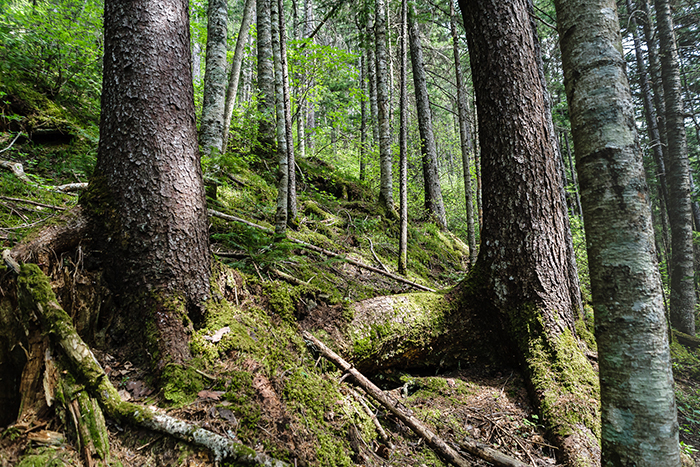
Maruseppu’s Sakhalin spruce forest.
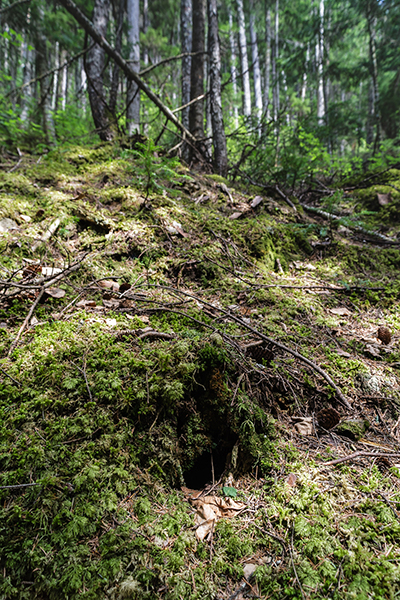
If you put your hand into an air hole you can feel how cool it is.
Industry developed in Maruseppu because of the severe environment there. Piano soundboard production.
Kitami Mokuzai Co., Ltd. was transferred to Maruseppu after it was established in the neighboring city of Kitami in 1950. The company was established to provide materials for musical instruments, using 100- to 200-year-old Sakhalin spruce produced in the region.
Sakhalin spruce growth-ring width is narrow, creating a dense timber. Sakhalin Spruce produced in Maruseppu became indispensable in the production of pianos in Japan. It takes several skilled workers approximately two years to complete a soundboard.
Currently, it is extremely difficult to obtain Maruseppu-produced Sakhalin spruce over 100 years of age, so much of the unprocessed timber is imported from overseas. However, measures are now underway to create man-made forests of Sakhalin spruce in preparation for 100 to 200 years from now.

Piano soundboard. The soundboards of all the Yamaha pianos produced in Japan are manufactured by Kitami Mokuzai Co., Ltd.
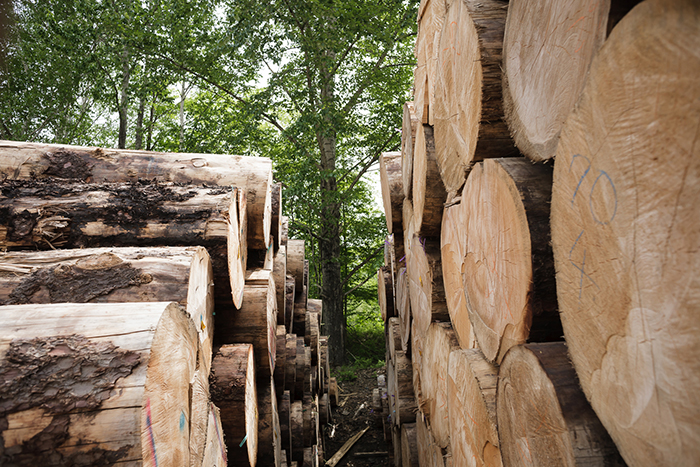
Dense, unprocessed timber with growth ring gaps of less than 1 mm is used to make soundboards. Only 10 to 15% of the unprocessed timber is made into a soundboard.

The wood is combined so that the grains match perfectly.
Shirataki Geopark Promotion Council
Website



